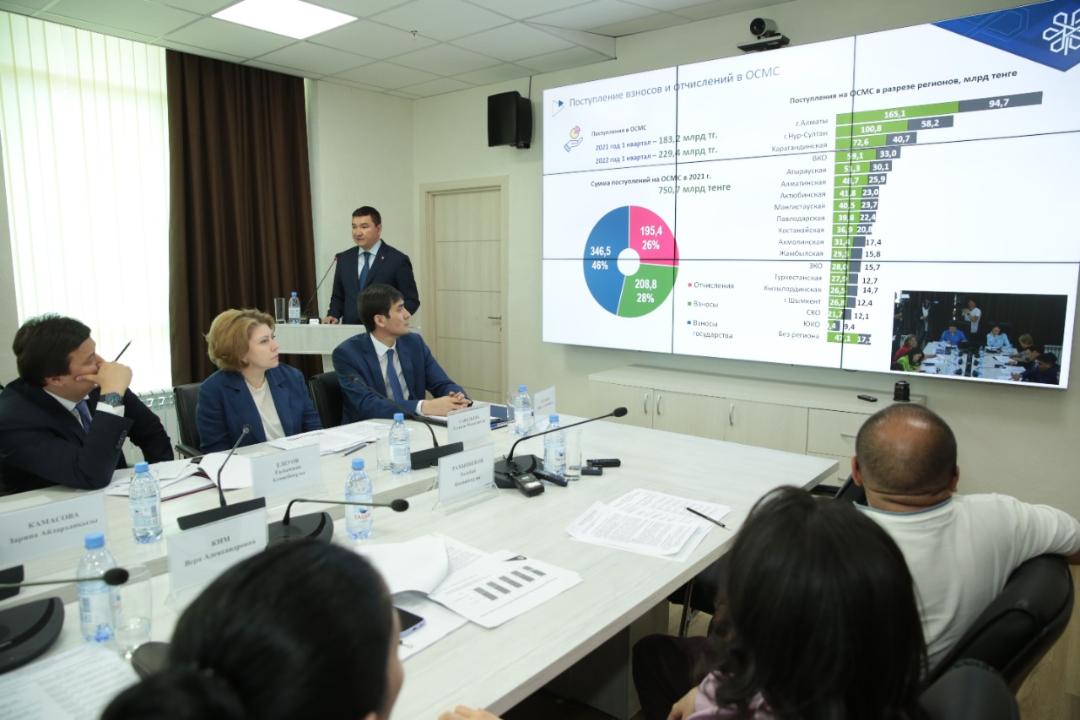The Committee for Social and Cultural Development of the Lower Chamber of Parliament of the Republic of Kazakhstan held a round table discussion on mandatory social health insurance attended by the Members of the Parliament, representatives of the Ministry of Health of Kazakhstan, Social Health Insurance Fund and the non-governmental sector in health care.
The meeting aimed discussing the results of the mandatory health insurance system. The frequent requests by the public for affordable and high-quality health care preceded this meeting.
Chairman of the Committee for Social and Cultural Development from the Parliament, the Member of Parliament Ms Jamilya Nurmanbetova noted the positive changes in the healthcare system after the introduction of mandatory health insurance and emphasized access to care issues that needed to be addressed.
“Despite the fact that the healthcare system received an additional source of funding — contributions from insured citizens, medical care is still inaccessible to some of the population. About three million people (out of 19 million total population) do not have access to the second tier insurance benefits package within the health insurance system. This has to be addressed. This round table was initiated by the Parliamentarian Committee with the goal to find solutions together with other stakeholders in the interests of patients,” Parliament Member Nurmanbetova said.
Minister of Health of Kazakhstan Azhar Giniyat reminded that the introduction of mandatory health insurance in 2020 was vital and it allowed attracting additional funds, as a result increasing total health care funding by 80%. In 2022, 2.2 trillion tenge was spent on health care, of which 852 billion tenge came from the mandatory health insurance,” the Minister said.
The Minister admitted issues that remained, including insufficient coverage, poor infrastructure in the regions, and incomplete digitalization.
Aidyn Ashuev, Chairman of the Executive Board (CEO) of the Social Health Insurance Fund, informed that increased healthcare funding made it possible to attract new medical service providers. More services became available to the insured people, which naturally stimulated competition between medical organizations. The Fund directly contracted 1,409 providers in 2022, of which 680 or 48% were state-owned (public), and more tahn half — 729 (52%) were private, a significant change from the ratio of 80-90% public providers versus 10-20% private providers a few years ago.
The CEO of the Social Health Insurance Fund summarized that since the launch of insurance system, availability of consultative and diagnostic services increased by 5 times. “Before the introduction of insurance, the population was provided with 56.4 million services of this kind per year, while in 2021 the volume of such services reached 292 million services. Of these, 1.3 million services were costly CT/MRI/PET examinations” he said.
Issues that still needed attention were raised by the non-governmental organizations, such as heads of medical associations and private sector providers.
Parliament Members emphasized the importance of accountability of the Fund, transparency and efficiency in spending funds by the Social Health Insurance Fund.


